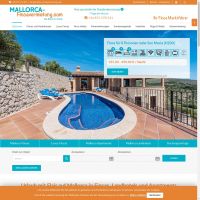Mallorca: From Holiday Island to Real Estate Hotspot
Mallorca has undergone a remarkable transformation as both a tourist destination and a real estate market. In the 1950s, tourism began to boom on the previously quiet island. From an initial 100,000 tourists in 1950, the number rose to over one million within a decade, and by the end of the 1990s, six million people were visiting Mallorca annually. This rapid increase helped establish the island as one of Europe”s most popular travel destinations.
Balearic Islands Lead the Way: Europe”s New Pioneers in the Circular Economy
But Mallorca is more than just a destination for sun-seekers and party enthusiasts. The island has also become an attractive real estate hotspot. Since 2015, the real estate market in Mallorca has been growing steadily by over five percent per year. Despite the challenges posed by the COVID-19 pandemic in 2020, when property sales fell by more than 23 percent, the market rebounded robustly in the following years. By 2021, record revenues were once again being achieved, and by 2022, the tourism industry had fully recovered from the crisis.
The real estate and construction sectors face the challenge of integrating sustainability and circular economy principles into their core approaches. In an era where resource scarcity and environmental impact are among the most pressing global issues, architecture and construction must also contribute their share.
Countdown Begins: The Balearic Islands Push for Circular Economy
In the past, construction often used materials harmful to the climate, which not only increased CO emissions but also hindered the circular economy. The trend is now shifting towards sustainable architecture, which relies on environmentally friendly building materials that consume fewer resources and have a longer lifespan.
The construction industry must adopt methods that close the material loop by promoting recycling and reuse. Innovative companies like ETERRA Iberia SL demonstrate how this can work. Daniel Slenters of ETERRA Iberia explains that the ETERRA project “ANDRATX HILLS” utilizes technologies like solar energy and rainwater harvesting systems to minimize the ecological footprint, showing that sustainable construction and stylish architecture are not mutually exclusive.
“Furthermore, integrating the circular economy into the real estate sector also increases the value of buildings,” adds Slenters. Studies show that properties built with sustainable concepts experience higher demand. The construction industry contributes to reducing environmental impact and creating aesthetically pleasing buildings through recycling, resource conservation, and innovative technologies.
Criticism of Radical Approaches: Mass Tourism and Sustainable Transformation Must Align with Social Impacts on the Balearic Islands
Critical discussions revolve around the rapid implementation of sustainability goals on the Balearic Islands, which could lead to negative economic developments. Reduced tourism, for instance, could decrease the island’s economic performance as fewer guests require infrastructure. This could lead to the repurposing of many restaurants, shops, and hotels. The potential redistribution of the released personnel could compensate for labor shortages in other sectors.
However, there are concerns about rising prices, which could make tourism on the island exclusive to an elite, leaving average families unable to afford vacations there. Radical approaches against mass tourism, sustainable real estate developments, and the implementation of the circular economy should not overlook the social dimension to ensure a balanced approach.
Luxury Meets Sustainability: Mallorca”s Real Estate Market Goes Green
Mallorca”s real estate market benefits from the resilient economy of the Balearic Islands and the growing demand for high-quality properties. “Sustainability in the luxury real estate sector is now a top priority,” emphasizes Daniel Slenters. Local developers and architects are exploring new ways to make new constructions environmentally friendly. Daniel Slenters, Managing Partner of ETERRA Iberia SL, sees the ETERRA Group as a pioneer in this movement. He adds that there is a clear demand for projects that combine innovative architecture with eco-friendly technology.
“The sun, which shines on Mallorca around 300 days a year, plays a central role,” says Slenters. By converting this solar energy into electricity, new buildings become more energy-efficient and sustainable. ETERRA Iberia SL develops projects that not only have a smaller ecological footprint but also increase property values. This sets a precedent that luxury and sustainability do not have to be mutually exclusive.
The regions in southwest Mallorca, such as Andratx and Port Andratx, are particularly sought after, where luxurious villas, fincas, and apartments dot the landscape. These areas offer not only breathtaking views and unique locations but also lucrative returns for vacation rentals.
Mallorca’s popularity as a real estate location is further enhanced by the straightforward purchase options for Germans and other Europeans. In Spain, there are no restrictions on property purchases by foreigners, making the market attractive to both investors and expatriates. Thus, over the past decades, Mallorca has evolved from a holiday island to a hotspot for real estate investments and permanent residence.
Author: Sven Bading, Managing Partner ETERRA-Group
Keywords:Mallorca, vacation island, Eterra Group, Sven Bading, real estate hotspot, tourism, real estate market, sustainability, circular economy, construction industry, sustainable architecture, solar energy
Powered by WPeMatico
https://bildung.pr-gateway.de/mallorca-from-holiday-island-to-real-estate-hotspot

